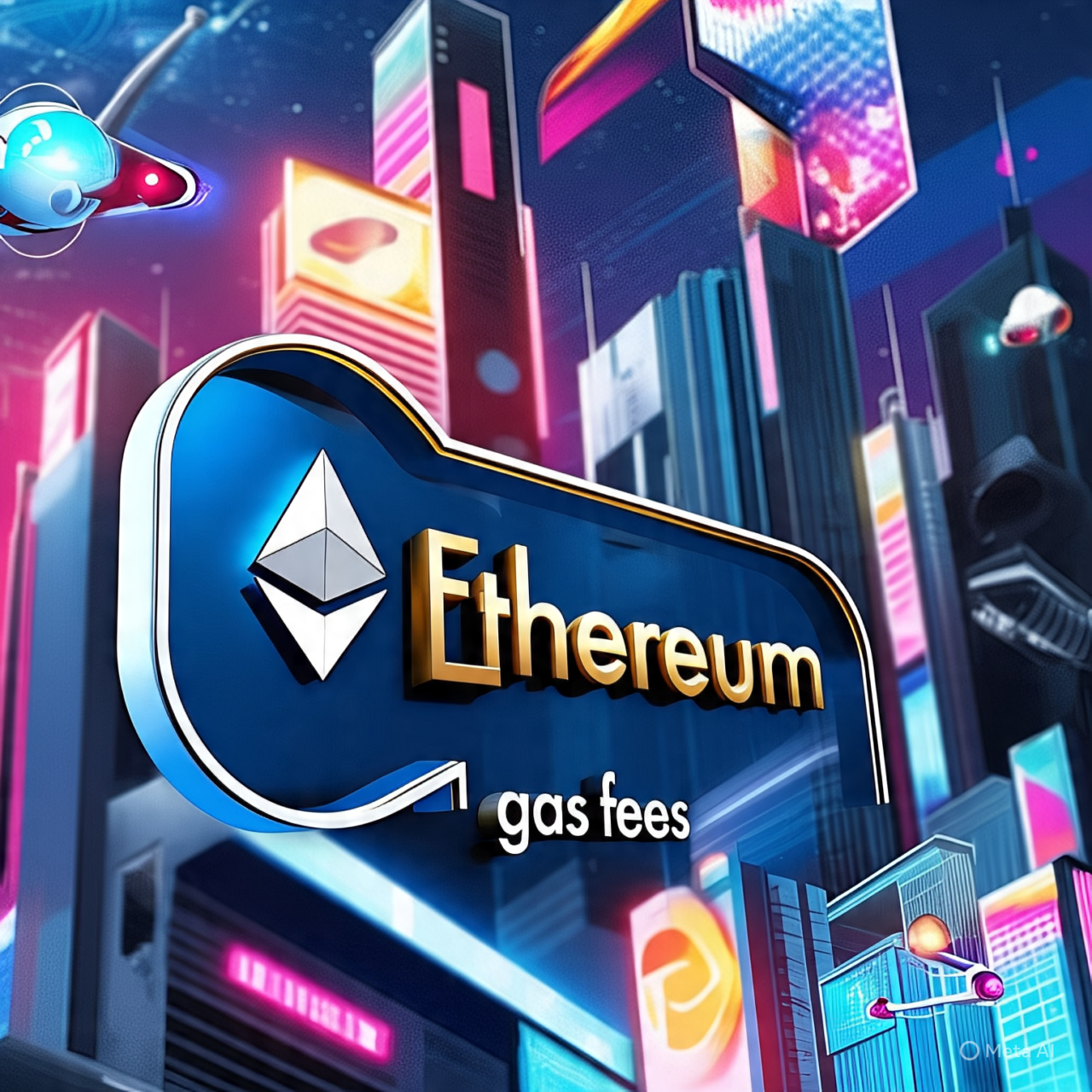Meta Description: Explore Layer 2 Solutions explained for scaling Ethereum for mass adoption in 2025. Understand how L2s boost speed & lower costs.
Introduction: Ethereum’s Scalability Challenge and the Rise of Layer 2s ⛽⚡

Ethereum, the undisputed king of decentralized applications (dApps) and smart contracts, has faced a persistent challenge: scalability. As its popularity soared, so did network congestion, leading to painfully high “gas fees” and agonizingly slow transaction speeds. This bottleneck has been a significant barrier to Ethereum’s dream of true mass adoption, preventing it from becoming the global computing platform it aspires to be. But what if there was an elegant solution, built right on top of Ethereum, designed to dramatically boost its capacity?
Enter Layer 2 Solutions. These ingenious technologies are not merely upgrades; they are fundamental components of Ethereum’s future, designed to unlock its full potential for everyday use. In this comprehensive guide, we’ll explain Layer 2 Solutions, delve into their various types, and illustrate how they are pivotal for scaling Ethereum for mass adoption in 2025. Get ready to understand how these innovations are making Ethereum faster, cheaper, and more accessible for everyone.
The Ethereum Scalability Trilemma: Why Layer 2 is Essential

To grasp the necessity of Layer 2 Solutions, we must first understand the core dilemma faced by all blockchains: the Scalability Trilemma. This concept states that a decentralized network can only achieve two of three properties at any given time:
- Decentralization: A large number of independent nodes securing the network, preventing single points of failure.
- Security: Robust cryptographic and economic mechanisms protecting the network from attacks.
- Scalability: The ability to handle a high volume of transactions quickly and cheaply.
Ethereum’s core developers have historically prioritized decentralization and security above all else. This choice has ensured Ethereum’s robustness and trustlessness, but it has come at the cost of scalability.
- Pain Points: As of early 2025, while Ethereum has made significant strides with “The Merge” (moving to Proof-of-Stake), the base layer still processes transactions sequentially. During periods of high demand, this leads to:
- Exorbitant Gas Fees: Users bidding against each other for transaction space, making simple operations (like token transfers or NFT mints) prohibitively expensive.
- Slow Transaction Confirmations: Transactions can take minutes or even longer to be confirmed.
This inability to handle a high volume of transactions cheaply is the primary hurdle preventing dApps on Ethereum from reaching billions of users. This is where Layer 2 Solutions step in as the crucial missing piece for scaling Ethereum.
What Are Layer 2 Solutions?

Layer 2 Solutions are off-chain protocols or frameworks built on top of the main Ethereum blockchain (Layer 1, or L1). Their primary purpose is to process transactions and execute smart contracts outside the main chain, significantly increasing throughput and reducing costs, while still leveraging Ethereum’s robust security.
Think of Layer 1 Ethereum as a super secure, but very crowded, central highway. Layer 2 Solutions are like various types of express lanes, side roads, or even parallel highways that take traffic off the main road, process it efficiently, and then periodically send a summarized, verified report back to the main highway. This offloading of work is key to scaling Ethereum.
The Core Idea: Inheriting L1 Security While Boosting Performance
The brilliance of Layer 2s lies in their ability to inherit the security guarantees of Ethereum’s Layer 1. They don’t compromise decentralization or security; instead, they extend Ethereum’s capabilities by providing environments where transactions can occur rapidly and cheaply, with their finality or correctness ultimately rooted in the Layer 1 blockchain.
Types of Layer 2 Solutions Explained

Several distinct types of Layer 2 Solutions are designed to tackle scalability, each with its unique approach, strengths, and trade-offs. Understanding these is vital for anyone looking into scaling Ethereum for mass adoption in 2025.
1. Rollups: The Leading Contenders
Rollups are currently the most prominent and promising Layer 2 Solutions. They “rollup” (bundle) hundreds or thousands of off-chain transactions into a single batch and then post a compressed summary of this batch to Ethereum Layer 1.
a. Optimistic Rollups:
- How They Work: They “optimistically” assume all transactions in a batch are valid. They post the batch to L1 without immediate cryptographic proof. There’s a “dispute window” (typically 7 days) during which anyone can challenge a transaction if they find fraud. If fraud is proven, the fraudulent transaction is reverted.
- Pros:
- Relatively simpler to implement.
- High Ethereum Virtual Machine (EVM) compatibility, making it easy for existing dApps to migrate.
- Cons:
- Withdrawal delays (the 7-day dispute window can be long).
- Examples: Optimism, Arbitrum. These have seen significant adoption and TVL (Total Value Locked) in 2023-2025.
b. ZK-Rollups (Zero-Knowledge Rollups):

- How They Work: They use complex cryptographic proofs (zero-knowledge proofs) to instantly verify the validity of off-chain transactions. When a batch is posted to L1, an accompanying ZK proof cryptographically guarantees the transactions’ correctness.
- Pros:
- Instant Finality: Once a ZK proof is validated on L1, transactions are final – no dispute window.
- Stronger Security: Cryptographic guarantees are superior to optimistic assumptions.
- Potential for Privacy: Zero-knowledge proofs can hide transaction details while proving their validity.
- Cons:
- Historically, complex to develop and less EVM-compatible (though this is rapidly changing).
- High computational cost for proof generation.
- Examples: zkSync Era, StarkNet, Scroll. These are often seen as the long-term future of rollups due to their security and finality benefits. Their EVM compatibility is improving dramatically in 2025.
2. State Channels

- How They Work: Two or more participants lock up a portion of their funds in a smart contract on L1, allowing them to conduct a series of off-chain transactions directly with each other without involving the main blockchain until the channel is closed. Only the final state is settled on L1.
- Pros:
- Extremely fast and virtually zero fees for off-chain transactions.
- Cons:
- Limited to direct interactions between participants.
- Requires locking up liquidity.
- Less suitable for general-purpose dApps.
- Example: Raiden Network (less common for broad scalability solutions today).
3. Sidechains

- How They Work: Sidechains are independent, EVM-compatible blockchains that run in parallel to Ethereum L1. They have their own consensus mechanisms and validators (e.g., Proof-of-Stake). Users can move assets between the sidechain and Ethereum L1 via a two-way bridge.
- Pros:
- Very high scalability and low fees.
- Often highly EVM compatible, making dApp migration easy.
- Cons:
- Their security is independent of Ethereum L1. If the sidechain’s validators are compromised, its security could be at risk. They don’t inherit L1 security directly in the same way rollups do.
- Example: Polygon PoS (Proof-of-Stake). Polygon has been instrumental in onboarding millions of users to the Ethereum ecosystem due to its high throughput and low fees.
How Layer 2 Solutions Tackle Ethereum’s Scalability Challenge

Layer 2 Solutions are not just theoretical; they are actively scaling Ethereum and enabling real-world use cases for mass adoption:
- Reduced Gas Fees: By processing transactions off-chain, L2s dramatically lower transaction costs, making micro-transactions and frequent dApp interactions economically viable.
- Increased Transaction Throughput (TPS): L2s can process thousands of transactions per second (TPS), a massive leap from Ethereum L1’s ~15-30 TPS. This is crucial for applications requiring high volume, like Web3 gaming.
- Improved User Experience: Faster transaction confirmations and lower costs lead to a much smoother and more enjoyable experience for users interacting with dApps, similar to traditional web applications.
- Maintaining Layer 1 Security: Despite processing transactions off-chain, L2s derive their security from Ethereum L1. Rollups post their state data back to L1, and sidechains rely on L1 bridges, ensuring the ultimate security and decentralization of the core network.
The Role of Layer 2s in Ethereum’s Mass Adoption in 2025

Layer 2 Solutions are not merely add-ons; they are integral to Ethereum’s “Rollup-Centric Roadmap.” This means Ethereum’s core development (like Danksharding) is designed to further enhance L2s, making them the primary execution layers for users.
In 2025, L2s are poised to:
- Enable True dApp Growth: From complex DeFi protocols and high-volume NFT marketplaces to immersive Web3 games, L2s provide the necessary infrastructure for dApps to scale and onboard millions. (Relevant to: [Web3 Gaming: Play-to-Earn’s Evolution & Why It Matters for Gamers & Investors in 2025]).
- Facilitate Enterprise Blockchain Solutions: Companies seeking to leverage Ethereum’s robust smart contract capabilities for supply chains, identity, or finance will increasingly rely on L2s for efficiency.
- Lower the Barrier to Entry: Reduced fees and faster speeds make it feasible for everyday users to engage with blockchain technology without a significant financial or time barrier, driving genuine mass adoption.
Challenges and Future Outlook for Layer 2s in 2025

Despite their promise, Layer 2 Solutions still face hurdles:
- Interoperability Between L2s: Moving assets and data seamlessly between different Layer 2s is an ongoing challenge. Solutions like cross-L2 bridges are improving.
- User Fragmentation: The proliferation of L2s can be confusing for new users, creating a fragmented user experience.
- Developer Complexity: Building and deploying dApps on various L2s still requires specialized knowledge.
- Competition: The L2 landscape is highly competitive, with different solutions vying for market share and developer adoption.
- Complementing Ethereum’s Upgrades: Ethereum’s own core upgrades (like proto-danksharding, aiming to reduce L2 data costs) will further enhance L2s, making them even more efficient.
Real-life Example: In late 2023 and early 2024, the surge in popularity of a new Web3 game led to massive transaction volumes on an Optimistic Rollup-based Layer 2, demonstrating how these solutions can handle millions of daily transactions, which would have been impossible on Ethereum L1 without prohibitive costs. This showcases the real impact of scaling Ethereum for gaming.
Quote: Vitalik Buterin, Ethereum co-founder, has repeatedly stated that “The future of Ethereum is rollups.” This sentiment underscores the critical role of L2s in achieving Ethereum’s vision.
Conclusion: The Backbone of Ethereum’s Future

Layer 2 Solutions explained are not just technical jargon; they are the critical engines that are scaling Ethereum and paving the way for its mass adoption in 2025 and beyond. By offloading transactional load from the main chain while inheriting its robust security, L2s are making blockchain interactions faster, cheaper, and more user-friendly.
Whether it’s the instant finality of ZK-Rollups, the broad compatibility of Optimistic Rollups, or the versatile scalability of sidechains, these innovations are dismantling the barriers that have historically limited blockchain’s reach. As a user, understanding Layer 2s empowers you to engage more efficiently with dApps. As an industry, they represent the indispensable bridge to a decentralized future where Ethereum powers billions of transactions globally.
Call to Action: Explore a dApp on a Layer 2 network like Optimism or Arbitrum. Experience the speed and low fees firsthand, and see how Layer 2 Solutions are transforming your interaction with the Ethereum ecosystem today!


ujly1a